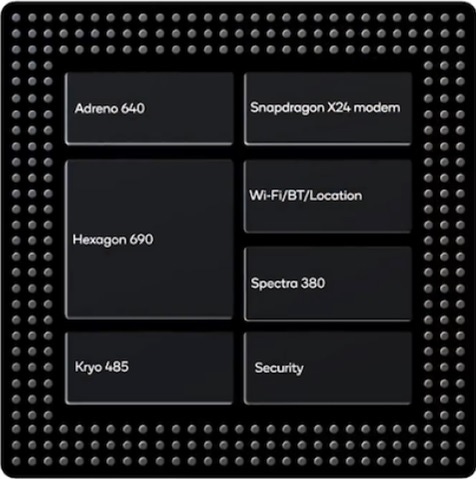A Closer Look at the Samsung S10 5G's AI Engine
A breakdown of the key components of the Qualcomm AI Engine behind Samsung's latest generation of smartphones.
April 1, 2019

Samsung's latest smartphone, the S10 5G, was one of the biggest announcements to come out of the February 2019 Mobile World Congress (MWC).While the phone offers a number of impressive upgrades in terms of display quality, camera, ect. The major innovations come in the form of the phone's 5G modem (hence the name), and more notably, the next-generation AI Engine at the phone's core.
These major improvements come courtesy of the Qualcomm Snapdragon 855 Mobile Platform on which the S10 5G is built.
|
(Image source: Qualcomm) |
The smartphone’s 5G designed was created using a Snapdragon X50 5G modem. Although 5G is the primary wireless system, a multi-gigabit 4G connectivity is onboard to assist in providing high data rates. In addition, the S10 5G includes a 25W fast charger allowing wireless charging to occur when a second headset is place against it. Besides the intelligent battery managing these enhanced electronic features, the Snapdragon 855 Mobile Platform AI engine is also powered by the energy efficient power source.
The Snapdragon 855 AI Engine architecture is constructed using three processors: a Hexagon 690 internet protocol (IP), an Adreno 640 GPU, and a Kryo 485 CPU.
|
(Image Source: Qualcomm) |
Adreno 640 GPU
The Adreno 640 GPU provides enhance graphics capability for the S10 5G smartphone. The graphics pipeline supports a color depth using 10bits to allow a high dynamic range (HDR) of video quality. Also, the Adreno 640 GPU can support 120 frames per sec (fps) for viewing of video or gaming with a 3K 360-degree video playback.
Kryo 485 CPU
The Kryo 485 CPU supports the Snapdragon 855 new Arm Cortex A76 CPU through system partitioning. The Kryo 485 has four Cortex A55 CPUs supporting four Arm Cortex A76 CPUs. The processors are split into a 1+3+4 arrangement which provides a 2.84GHz single core frequency along with a 2.4GHz power core frequency and a 1.82 GHz efficiency core frequency. The overall system partitioning effect is higher performance, fast data processing, and superb energy efficiency of the AI Engine.
Hexagon 690 IP
The Hexagon 690 IP is dedicated for the tensor accelerator. A tensor is a “n” dimensional array capable of holding large sets of data. Therefore, the tensor accelerator using machine learning (ML) algorithms will allow media access control (MAC) addresses to be managed and generated by the Hexagon 690 IP. The MAC enables Wi-Fi connectivity and supports the S10 5G's wireless features, supplied by the Snapdragon X24 LTE modem. Also, with the S10 5G’s new voice assistant AI module the Hexagon 690 can support natural language processing (NLP) – an AI-based voice assistant technology.
Spectra 380
The Snapdragon 855 AI Engine infrastructure also includes a computer vision accelerator. The Spectra 380 is an upgraded image signal processor (ISP). The AI Engine is boosted by a tri-core computer vision ISP that allows object classification, object segmentation, and depth sensing using the five onboard cameras. Classification, segmentation, and depth sensing uses AI algorithms that supports the S10 5G's augmented reality, body tracking, and image stabilization features.
RELATED ARTICLES:
Don Wilcher is a passionate teacher of electronics technology and an electrical engineer with 26 years of industrial experience. He’s worked on industrial robotics systems, automotive electronic modules/systems, and embedded wireless controls for small consumer appliances. He’s also a book author, writing DIY project books on electronics and robotics technologies.
ESC BOSTON IS BACK! The nation's largest embedded systems conference is back with a new education program tailored to the needs of today's embedded systems professionals, connecting you to hundreds of software developers, hardware engineers, start-up visionaries, and industry pros across the space. Be inspired through hands-on training and education across five conference tracks. Plus, take part in technical tutorials delivered by top embedded systems professionals. Click here to register today! |
About the Author(s)
You May Also Like





.jpg?width=300&auto=webp&quality=80&disable=upscale)


